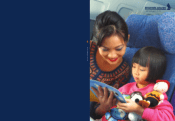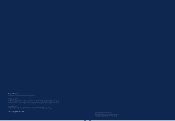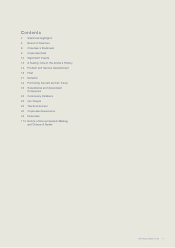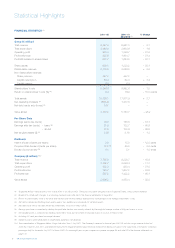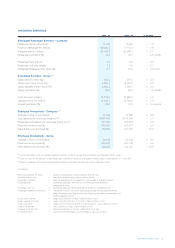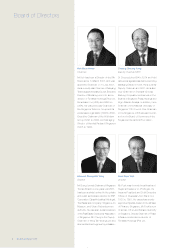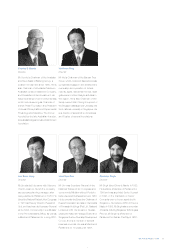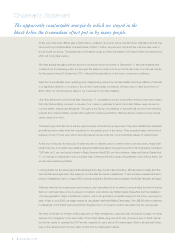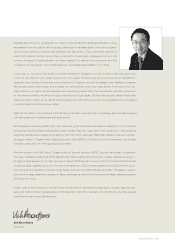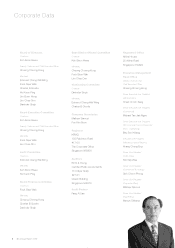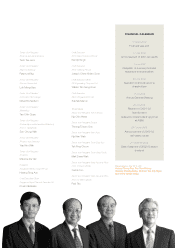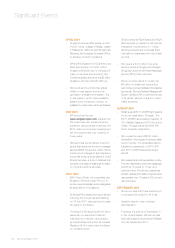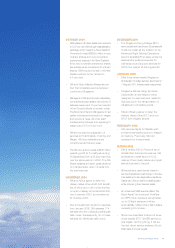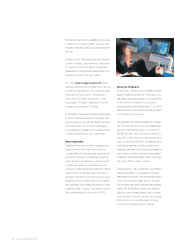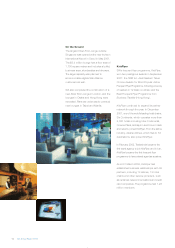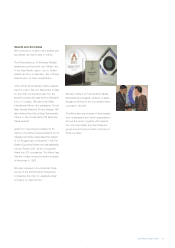Singapore Airlines 2002 Annual Report Download - page 8
Download and view the complete annual report
Please find page 8 of the 2002 Singapore Airlines annual report below. You can navigate through the pages in the report by either clicking on the pages listed below, or by using the keyword search tool below to find specific information within the annual report.
The apparently comfortable margin by which we stayed in the
black belies the tremendous effort put in by many people.
Chairman’s Statement
At the end of the most difficult year in SIA’s history, certainly in economic terms, the SIA Group maintained its loss-free
record with a profit attributable to shareholders of $631.7 million. Anyone who may think the outcome was never in
doubt would be wrong. The apparently comfortable margin by which we stayed in the black belies the tremendous
effort put in by many people.
We were already struggling with an economic slowdown when the events of September 11 last year shattered the
confidence of the travelling public and plunged the aviation industry into its worst financial crisis. Our half-year results,
for the period ending 30 September 2001, reflected the early effects of the loss in consumer confidence.
Apart from a substantially lower operating profit, disappointing returns from Air New Zealand and Virgin Atlantic contributed
to a significant decline in our share of the profits of associated companies. We also had to make a provision of
$267 million for the diminished value of our investment in Air New Zealand.
Like other airlines around the world after September 11, we battled to control costs while insurance premiums soared.
With load factors falling, services on several of our routes, in particular those to the United States, were reduced or,
in a few cases, suspended altogether. Throughout the Group, we deferred or cancelled all but the most essential
projects and, where possible, worked with suppliers to reduce expenditure. Staff recruitment, except in a few special
cases, was put on hold.
The silver lining to this dark cloud was the way the people of the SIA Group responded. They demonstrated their dedication
and willingness to make short-term sacrifices for the greater good of the Group. They accepted salary reductions of
between 2.5 and 15 per cent, which obviously helped reduce costs but, more importantly, staved off retrenchment.
At the end of the year, the recovery of loads across our network, and to a lesser extent cost reductions, helped SIA
remain loss-free. Our results were certainly helped by finally being able to recognize the profit of SIA Engineering Company’s
1998 sale of 51 per cent equity interest in Eagle Services Asia (ESA), and by a decision, taken well before September
11, to change our depreciation policy to better align ourselves with the industry. Nevertheless, even without these, we
would have remained profitable.
Looking ahead, we are seeing signs that passenger and cargo demand are recovering. SIA has restored nearly all of the
services that were suspended in the weeks and months after the events of September 11, and we have increased services to
points in Australia and China. In August 2002, we shall operate the first direct service between South East Asia and Las Vegas.
While we have had to be extremely cost conscious, we have strived to do so without compromising the level of service
that our customers have come to expect. Innovations such as the new Raffles Class SpaceBed and the installation
of a new-generation inflight entertainment system, which will give SIA a competitive edge into the future, were kept on
track. In fact, in June 2002, we began operations using these new lie-flat Raffles Class seats. This US$100 million investment
in passenger comfort and well-being will be integrated into our long and medium-haul fleet over the coming year.
We have continued our forward-looking approach to fleet management. Late next year, we expect to begin non-stop
services from Singapore to the west coast of the United States using the A340-500. And some time in 2006, SIA will
be the first carrier to operate the A380 aircraft, expected to carry about 500 passengers. Work is already well under
way on the development of a new cabin to best suit our passengers’ needs.
6 SIA Annual Report 01/02

